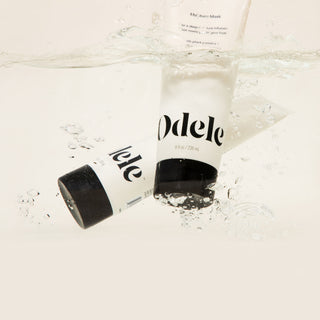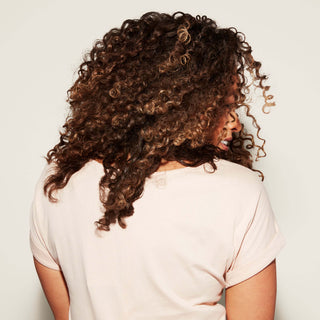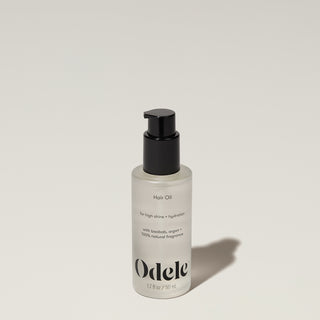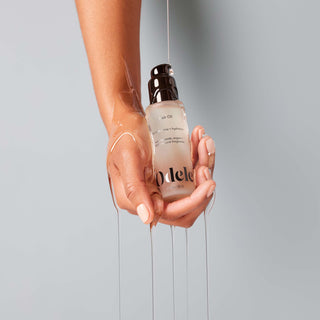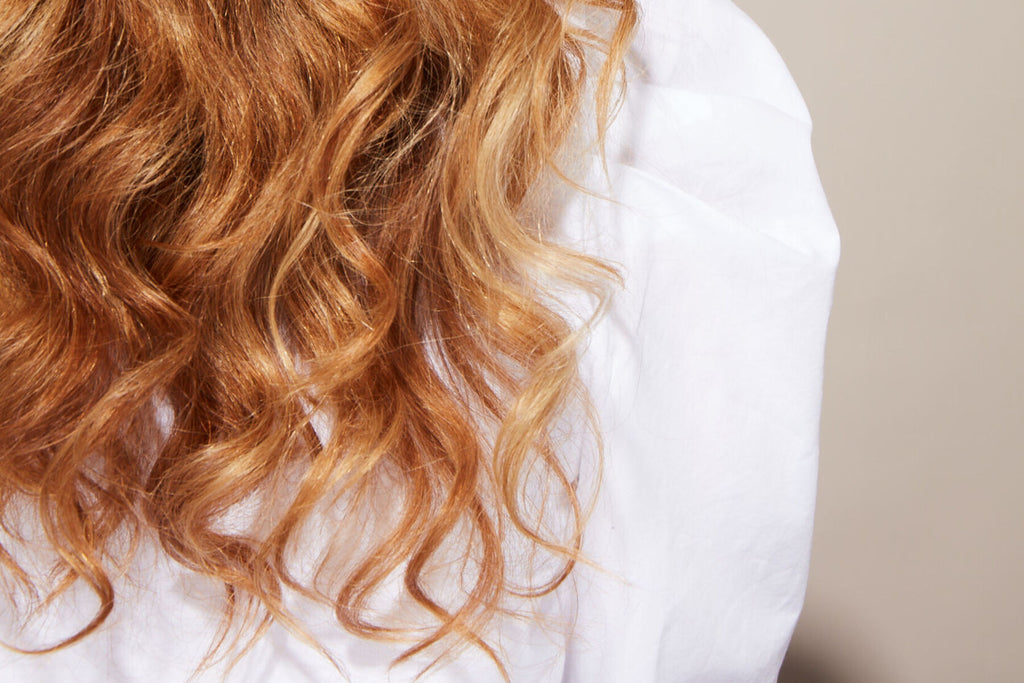So, you went a little wild with the flat iron… and now you’re dealing with heat damage.
First off, take a deep breath. It’s going to be okay! Heat damage is a bummer, but it’s fixable. It may take some time and patience, but you will restore your hair to its healthy, happy state. Ready to get started?
How to tell if your hair is heat-damaged
Hot tools can be fabulous for styling, but frequent exposure to high temperatures can wear down healthy strands. Heat damage happens when the hair cuticle, which acts as a shield for the inner layers of the hair strand, breaks from repeated stress. Without the protection of the cuticle, the hair’s inner cortex (the part responsible for the strength and elasticity of our hair) gets weak and damaged.
When heat damage shows up, it can look like:
- split ends
- breakage
- dryness
- dullness
- frizziness
- flyaways
- rougher texture
- looser or straighter curl pattern
- frequent knots and tangles
- fading hair color
- excessive hair shedding
If you’re experiencing these signs of heat damage, it could be time to take a step back from heat styling and focus on restoring your hair’s health. Let’s walk through your recovery plan.
How to fix heat-damaged hair without cutting it
The fastest way to fix heat-damaged hair is to cut off the damaged areas and start fresh. We know that may feel daunting: cutting your hair is a big, emotional decision, especially if it means adjusting to a drastic change in length. So if you aren’t keen on doing a big chop, here are the exact steps you can take to nurse your hair back to health.
1. Stash away the hot tools. It’s time. This doesn’t mean you can never heat style your hair again, but it’s best to avoid using heat on damaged hair if you want it to bounce back. So, pack up those tools until your hair is in healthier shape.
2. Take a break from color treatments and other chemicals. Chemicals like hair dyes and relaxers are harsh on strands. To prevent further damage, stop using these treatments if your hair is already in rough shape from excessive heat.
3. Use a damage-repairing wash routine. Swap your everyday shower products with formulas that focus on moisturizing, strengthening and restoring brittle, damaged hair. Our Repairing regimen is a good option for heat-damaged locks: the shampoo and conditioner are packed with fortifying amino acids and nourishing ingredients that improve the overall health and shine of all hair types. A deep-conditioning mask is also a must if you want to speed up your hair’s improvement. Hair is made out of protein, so products that work to restore hair protein will support healthier, less-breakage-prone strands.
4. Get comfortable with air drying. If you’ve previously relied on hot tools to smooth and style your strands, air drying may come with a learning curve. To get it right, you’ll want to track down the best air-dry products for your hair type—this will help your hair stay hydrated, bouncy and frizz-free. Get familiar with these helpful techniques for air drying mastery. With the right products and tricks up your sleeve, air drying is actually pretty easy (and will save you lots of time).
5. Moisturize generously. Dry hair is more likely to break, tangle and shed. To avoid breakage and encourage healthy growth, make sure you’re moisturizing your hair thoroughly outside of the shower. Use leave-in conditioner post-wash to lock in hydration, and follow up with additional moisturizers and oils if your hair needs them.
6. Style gently. A big part of fixing heat-damaged hair is preventing further damage. Your ends will generally be the weakest, most brittle part of your hair since they’ve been around the longest. Handle your hair with care to prevent that breakage from spreading higher up the hair shaft. This can look like drying hair softly with microfiber or cotton (vs. a rough towel), detangling with a wide-tooth comb (or your fingers), avoiding tight, tugging hairstyles and sleeping on silk or satin to preserve moisture and prevent friction.
7. Trim your hair every four to six weeks. You may not be ready for a full haircut, but be sure to keep up with regular trims. As we mentioned above, your ends are the most damaged section of your hair. You don’t want split ends hanging around too long because 1) they’ll make your hair look brittle and frizzy and 2) the ends can continue splitting up your hair shaft, causing more damage. And the more you remove those old, dead ends, the more your beautiful, healthy new growth can shine.
8. Be patient. Heat damage won’t disappear overnight. But if you’re consistent with your care routine, your hair will eventually improve as new growth comes in and old growth recovers its health and shine. So keep at it—it will all be worth it!
How to prevent heat damage
To prevent heat damage from creeping back up on you in the future, follow these tips:
Use a heat protectant every time. Never put heat on your hair without thermal protection—this is a fast track to damage. The good news is that there are all kinds of heat protectants out there for every hair type and budget, so find the one that works best for you.
Use the lowest effective temperature. You may not need to crank up the temp to 450 degrees to achieve a sleek, straight look. When possible, turn down the temperature to reduce stress on your hair.
Mix it up. Even if you’re taking all the right precautions, it’s best not to apply heat to your hair every day. Switch things up—rotate between heat styling, air drying, protective styles, etc., to give your hair a break from time to time. These days, there are all kinds of tricks for getting the curl wand or blowout look without using any heat whatsoever.





